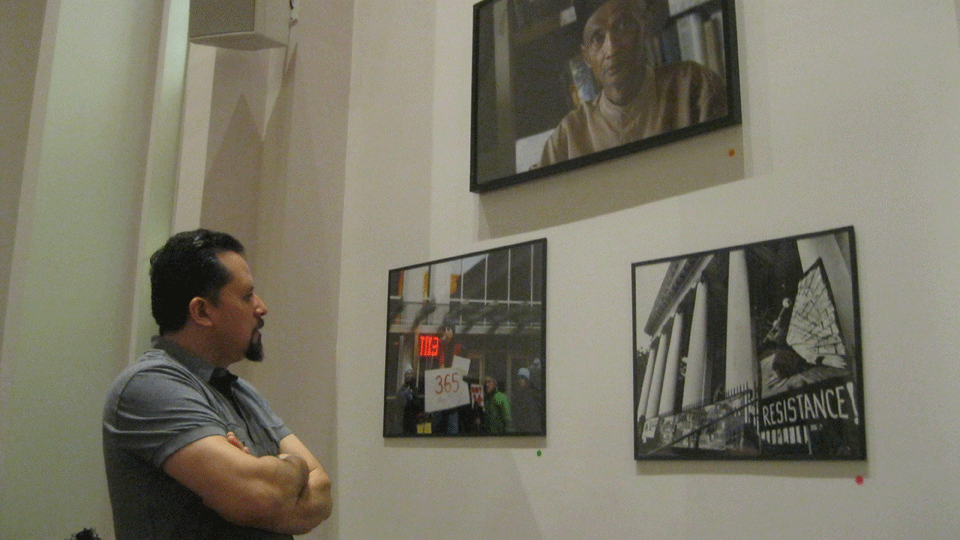
NEW HAVEN, Conn.—Nelson Pinos Gonzalez has changed New Haven forever with his courage, quiet determination, and absolute refusal to be separated from the family that he loves. Since he entered the First and Summerfield United Methodist Church in sanctuary on November 30, 2017, the response of this city has made it a greater sanctuary for social justice.
The power of the movement to Keep Nelson Home and the pain, fears, hopes, and even joyous moments of the past 500 days are depicted in a remarkable traveling photo exhibit, “Sanctuary: Communities Fighting for Freedom.” The exhibit was unveiled at the church on April 13 before a crowd of 150.
Everyone who has met Nelson or heard of the case has been moved—from the classmates of daughters Kelly, Arlly, and son Brandon, to union members and students at Yale University, to state and city and Congressional elected officials, to faith leaders and artists and the entire immigrant community.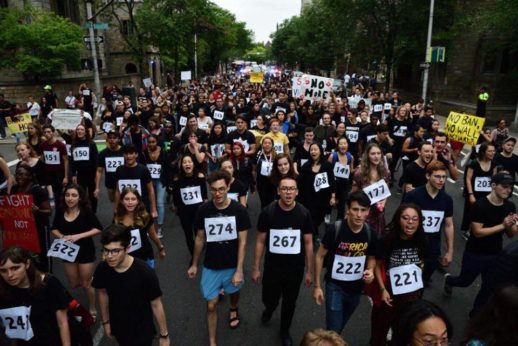
All of this is shown in the photos that were selected for the exhibit. Perhaps Nelson’s favorite is one of hundreds of people in the street, a river of people with no end in sight, gathered in his defense and demanding that he be allowed to return to his home in the East Shore section of the city with his partner Elsa and three children.
The outstanding feature of Nelson’s case is the ordinary life he was living, and the arbitrary disruption and uprooting that has been cruelly inflicted by an immigration policy that dehumanizes and terrorizes families, especially targeting those from Latin America. Nelson’s resistance is deeply personal. Yet, the struggle in solidarity with Nelson is also a response to the thousands of cases like his.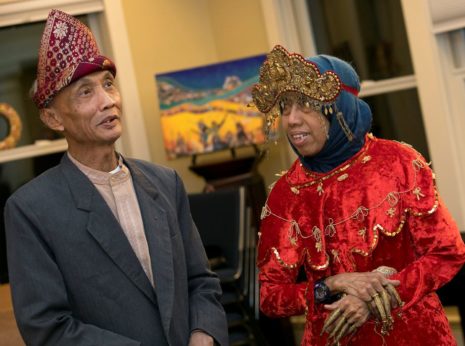
Sujitno Sajuti of West Hartford has been living in sanctuary at the Unitarian Universalist Church in Meriden, Connecticut since October 2017. The photo exhibit includes several pieces that show Sajuti, originally from Indonesia, and his wife Dalia in the church that has taken them in. A Fulbright scholar who has lived in the United States since 1981, Sajuti celebrated his 70th birthday in sanctuary in defiance of the order from ICE that he be deported.
Nelson is 45. Before entering into sanctuary, he worked at a manufacturing company for 15 years as a machinist and was sole provider for his family.
After leaving his home in Ecuador in 1992 during that country’s deep economic crisis, Nelson crossed the border into the United States and came to New York. While visiting his brother-in-law in Minnesota in 1993, he was suddenly picked up by immigration authorities while walking down the street. When he was released, he never received the paperwork promised and returned to New York not realizing there was a deportation order against him. When he got the machinist job, he moved to New Haven.
Throughout the years, Nelson always worried about his undocumented immigration status. In 2012, he found a lawyer to represent him, but ICE refused to reverse the deportation order, and eventually ordered him to leave the country. That is when Nelson, realizing he might never see his family again, made the difficult and courageous decision to enter into sanctuary.
There have been many setbacks in his legal case, but Nelson has continued to appeal. Just before the photo exhibit opening, Nelson learned that his case will be heard in May in Minneapolis.
The movement that has grown up around Nelson, depicted in the photo exhibit, is extraordinary. The photos highlight scenes from the many actions on Nelson’s behalf initiated by the immigrant rights group Unidad Latina en Accion (ULA). 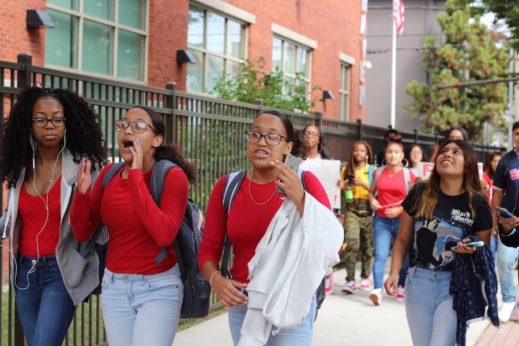
There are photos of the massive high school student walkout of 400 on September 20, 2018, organized at Wilbur Cross High School where Nelson’s eldest daughter Kelly is now a senior. The walkout was joined by students from several other schools and by college students at Yale and Southern Connecticut State University.
Nelson and Elsa worry about the trauma on their children and they express great pride at their resilience. The New York Times published an op-ed by Kelly last year at age 16: “I Don’t Understand Why People In This Country Hate Us So Much.”
ULA moved their weekly meetings from the New Haven People’s Center to the church so that Nelson and before him another immigrant who sought sanctuary, Marco Reyes, could participate. The meetings are filled with immigrant families facing court dates and in need of support. Arrangements are made for volunteers to accompany those without documents to court as protection against ICE.
The ULA meetings also plan for outreach to the community and for fundraising events, like the photo exhibit, to enable Nelson’s family to survive.
There are now about 41 immigrants along with 18 children and two dogs living in sanctuary in churches across the country in order to avoid deportation and separation from their families. Church World Service reports that 1,100 churches in the United States have joined in the sanctuary movement and are prepared to offer shelter as needed.
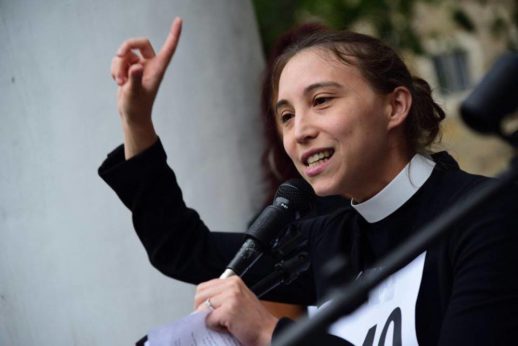
Pastor Vickie Flippin of the First and Summerfield United Methodist Church has been a passionate ally and leader in this movement. One of the photos is of her at a rally. Speaking at the opening of the photo exhibit she likened the event and its purpose to Easter and compared freedom for Nelson to the resurrection.
“Although we know that the victory, the resurrection, is coming,” said Flippin, “we also know that it’s already here,” she said explaining, “It’s in these actions and these relationships, the people who have spoken out and gotten involved and risked arrest and felt agency, who would never have done those things without the divine moment of the revolution.”
Another photo is of Nelson speaking from the church steps, addressing one of the large rallies held on the street outside. “Before all this,” says Nelson, “I didn’t know about politics.” But despite the strain and toll on the spirit that his situation brings, Nelson has kept hope and become a leader in his own right. Speaking at the photo exhibition, he said, “The struggle is not just mine, this fight is all of ours and for families in sanctuary like I am.”
The cruelty and turmoil of current immigration policy are destructive of any democratic process in our country. It ignores the reality that this land was taken from the indigenous peoples. It belies the fact that the drive of U.S. corporate and foreign policy for profits is responsible for much of the poverty and displacement in Central America.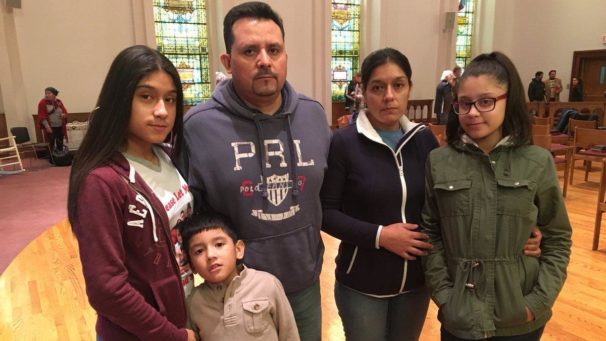
New Haven has declared itself a sanctuary city. Nelson is helping lead the effort for a more comprehensive ordinance to be brought before the Board of Alders. That effort is bringing together the common interests of Black, white, and Latino city residents.
The photo exhibit “Communities Fighting for Freedom” is a wonderful expression of hope and a call to action for all to resist the vicious attacks against immigrant communities. It is a powerful tool to push forward for comprehensive immigration reform with a path to citizenship and legal status for everyone.
Nelson, Kelly, Arlly, Brandon, and Elsa and this movement teach a powerful lesson for these times.
For information about the exhibition or to make a contribution contact:
Nelson Pinos
c/o First and Summerfield United Methodist Church
425 College Street
New Haven CT 06511


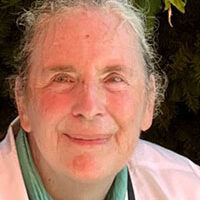
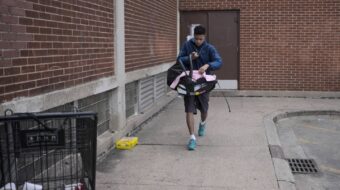
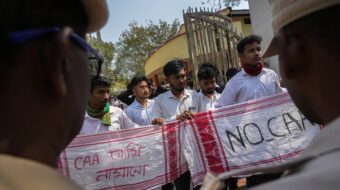
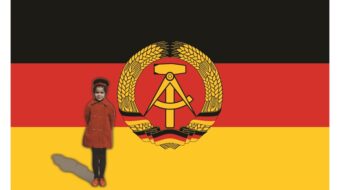






Comments